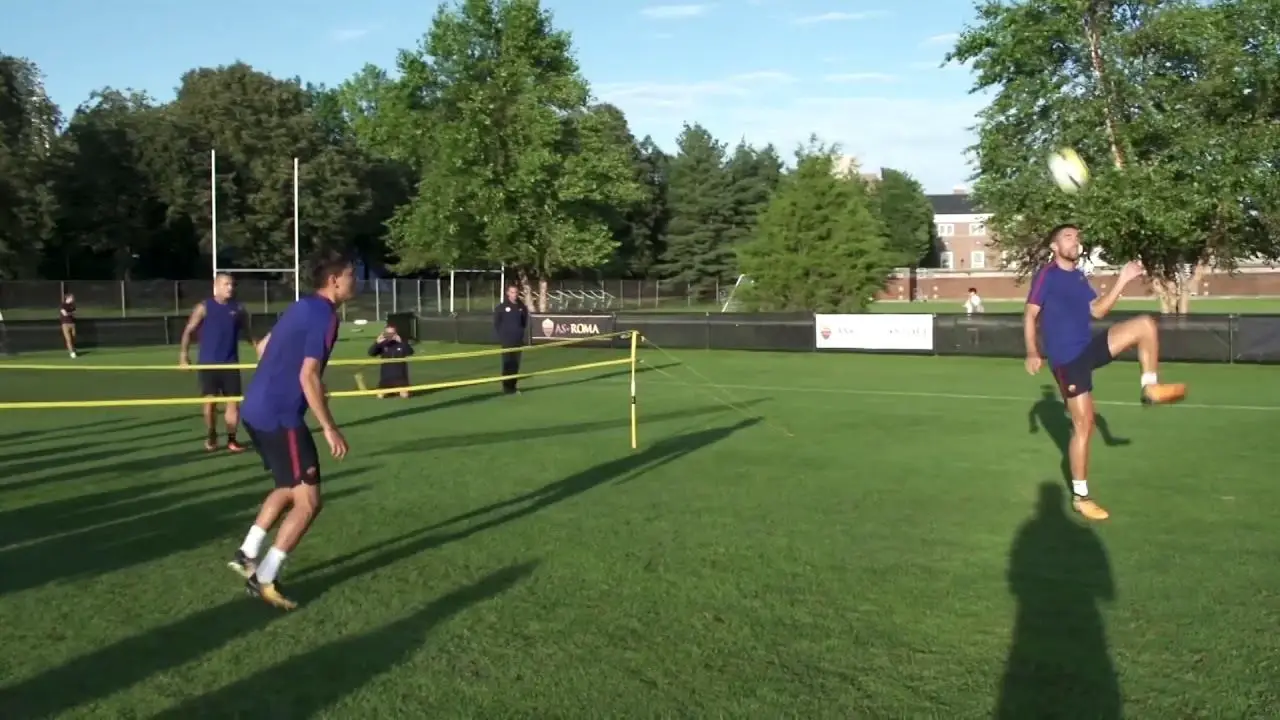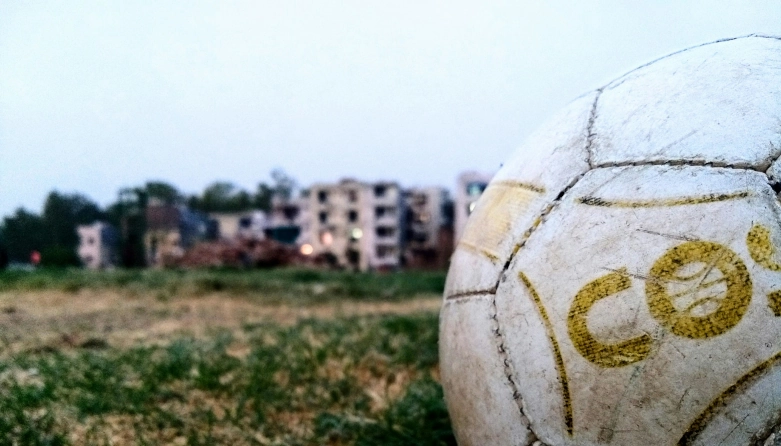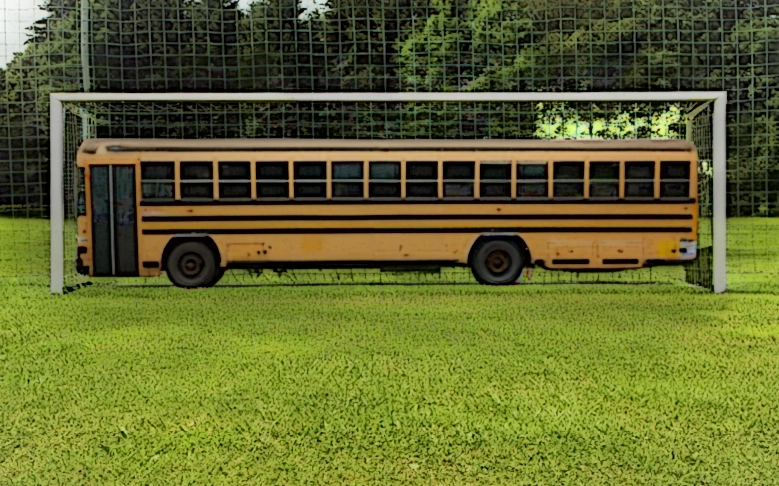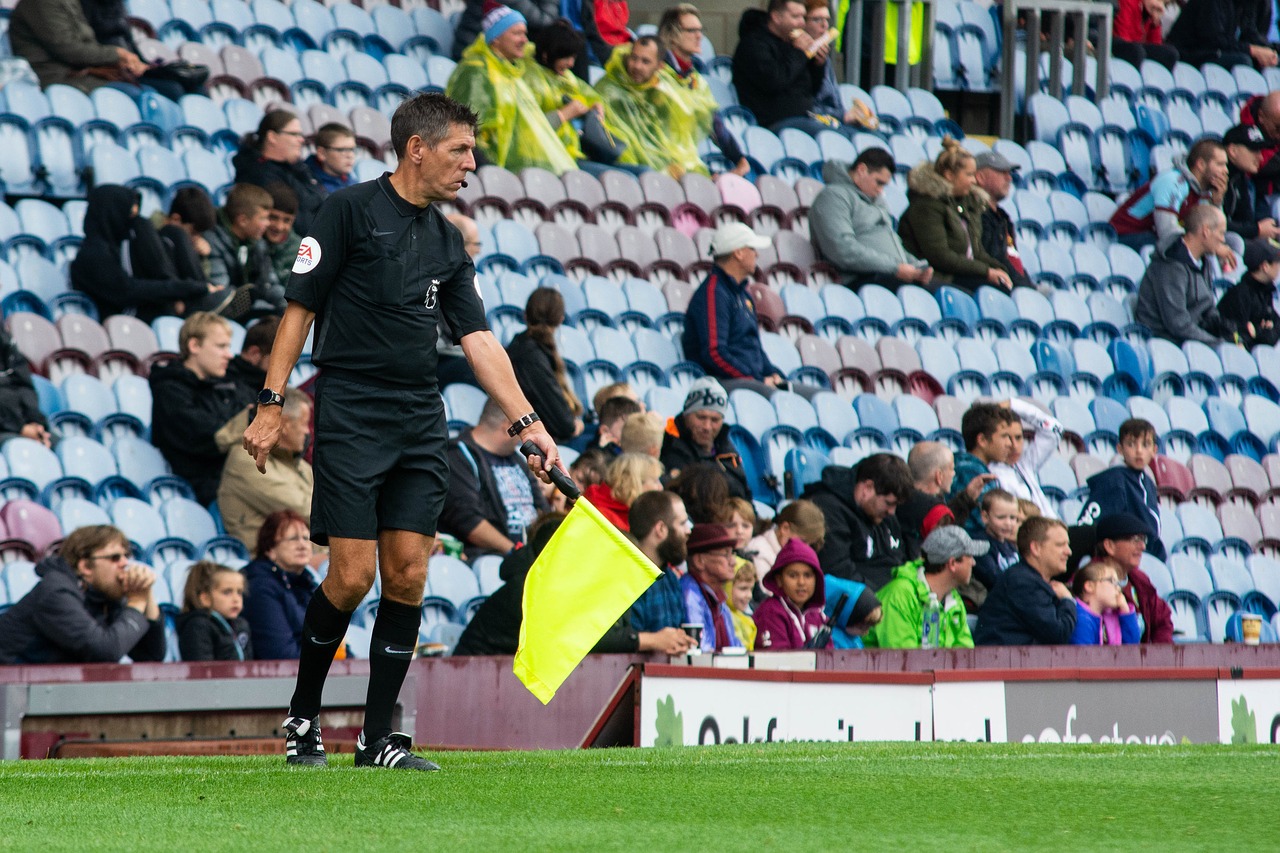Popular childhood football games you should play as an adult

When we were kids we only needed anything that resembled a ball and a goal to aim at. Many great players learned their skills while playing simple games with childhood friends. In this post, we collected popular childhood football games from around the world that you can incorporate into your training.
Our childhood football games usually required a handful of players and a ball. You were able to play them with your siblings or friends in the backyard, the hallway of a building block, a piece of grass, the street, etc. These types of games are great to use when you coach an amateur team and not many people show up to a training session or if you are trying to prepare for the season with a couple of friends. All you need is a bit of imagination, a friend and a ball.
The list below is by no means a comprehensive list. I’m from Argentina, we used to play many of the games below in the “potrero” (a rough football field, usually lacking grass). I also added to the list a few games that I learned from English friends. If you know more games, please feel free to comment and we will add them to the list.
1 on 1
The simplest of all games. You only need 2 players and random objects that act as goals. In the context of a formal training session, you should use a set of cones and small goals. Needless is to explain the rules, the aim is to score in the opposition goal using your feet.
There are small variants to this game that are usually decided on the spot. Two additional rules are often part of the game: when defending your goal you are not allowed to stay in it (no goalkeeping allowed); you are not allowed to shoot from a long distance.
This game was the nightmare of my parents. We would play it with my brother in our small garden breaking my mum’s precious roses. Or worse, we played it in the living room! 😛
This game develops drilling, clinical finishing and defensive skills. It can be used as a warm-up for the whole team. If you do the latter, you want to pair a defensive player with an offensive player. That way the defensive player will be forced to practice his drilling skills and the offensive player his defensive skills.
Goal to goal
It requires 2 players, each of them defending a goal and attempting to score from a long distance. The ideal size of the field to play is 5-aside or 7-aside. You could potentially play in an 11-aside pitch, but it would be very difficult to score.
There are many variations and rules to this game, these are those that I would recommend for senior players:
- The player defending the goal acts as a goalkeeper.
- Players take turns to kick and defend their goal.
- If a goal is scored or the ball goes out of the field, the game restarts with the defending player shooting to goal from inside his penalty box (or close to the goal if you are not playing in a proper field).
- When the ball is stopped or deflected but stays on the field, the defending player takes his turn at kicking from the spot where the ball bounced first.
- When the defending player caughts the ball without bouncing, they can do two things: throw the ball as far as they can with their hands or feet and then kick it from where it bounced, or use a volley kick to score.
This game is particularly good for goalkeepers. It helps train most skills required for the role: diving to stop a shot, avoiding rebounds by securely catching the ball, goal-kicking, and distribution with hands and feet.
Knockout
This game is also known as “Wembley” and “World Cup”. This game has many variants, but the basic idea is that each player tries to score on their own. To play you need at minimum a goalkeeper and 2 field players.
The goalie starts the game by kicking the ball sky high. Players have to wait for the ball to bounce once or twice (depending on your regional rules). Once the ball bounces every player is on their own to score a goal. Anything goes, from dribbling all the other players, to shooting at goal as soon as the ball bounces.
The game continues until all players but one has scored. The player that didn’t score is out of the game and the next round starts with one less player. The game goes on until only two players remain on the field. The player that scores in this final round is the winner.
The variants of this game usually depend on the number of players and players’ skills. For example, if you only have 3 players, the usual variant is that whoever loses a round goes to goal in the next round and the goalie becomes a field player. In this scenario, it is common to keep a tally on who scores more goals. It can get very strategic as the player on goal may allow easy goals to a player that hasn’t scored in order to get back in the field and to catch up with the lead scorer.
This game requires drilling and shooting skills. Therefore it is particularly good to develop attacking players. It is also a good game to train goalkeepers as shoots come from everywhere at any time.
Knocked out
We called this game “Eliminado” (Spanish for knocked out). It is very similar to “Knockout” or “Worldcup” but players are knocked out quicker. All sorts of events can get you out of the game. If you kick the ball out, you are out of the game; nutmegged, you are out of the game; handball, you are out. And so on…
Headers and volleys
You need at least 3 players. One player acts as the goalkeeper, while the others set each other up for volleys and headers. If the goalie stops a shot or the ball goes out wide, the player missing the chance replaces the goalkeeper.
The rules of the game are very loose and vary significantly depending on where you live. The setup can be done by kicking from a corner kick or simply a few steps away from the kicking player. Either way, the ball has to be lifted for a header or volley and the goalkeeper is not allowed to come out to catch it in the air (they need to wait for the shot). In some variants, the ball is thrown to the shooting player with the hands.
Although the game is called “Headers and Volleys”, headers were rare. Most kids played this game, and other childhood football games, as an excuse to blast the ball at the unfortunate goalkeeper.
As it is obvious, this game is good to practice volleys and headers. It is particularly good for goalies to work on their reflexes. If you simply want to practice your volleys have a look at this volley shot drill.
Walley
“Walley” or “Paredón” is a simple game that requires a ball and a wall. The game is usually played between 2 players or 4 players working in teams of 2. A player starts the game by kicking the ball at a wall, then participants take turns to kick the ball back at the wall before it bounces a second time. Only one touch is allowed. To make sure that the ball bounces, the ball has to hit the wall over a mark or line in it. It is like practising tennis against a wall.
The are other variants of this game. One variant is that a goal is drawn in the wall and there is no bounce rule. Instead, players simply aim at the goal using only one touch. Players have to choose between kicking the ball while in movement or waiting for it to stop. Players will kick the ball hard to make the following player turn as difficult as possible.
This game improves players’ first touch, precision and reaction.
25
This game was one of our favourites, but I haven’t heard of it outside South America. All you need is a goal and at least 3 players. All field players play together against the goalkeeper. Depending on how players score, they get different points. For example, pushing the ball into the goal is only worth 1 point. A goal scored with the head is worth 10 points. Players can touch the ball only once unless the ball is kept in the air.
There is a catch in this game, there is no winner, but there is a loser! Every time the ball goes out, the player that kicked it out replaces the goalkeeper. The game finishes when 25 points are reached. The player at goal (the loser) receives severe sanctions chosen by the rest of the players. The most common consequence of losing when we were kids was to stay still and receive a kick in your backside from each of the players involved.
As expected, the rules and the scoring system vary from town to town. The rules we used in our neighbourhood were:
- Players can touch the ball only once if it is on the ground
- Players can touch the ball as many times as they want as long as the ball is in the air
- Every touch in the air counts as 1 point. Points increase until a goal is scored or a player drops the ball to ground. For example, if a player keeps the ball in the air for 2 touches, passes to another player, and this player scores with a volley, the goal is worth 3 points.
- A a goal scored with the head is worth 10 points
- A back-heel goal is worth 3 points
- A goal with a nutmeg to the goalkeeper is worth 5 points
- A bicycle kick is worth 25 and the game is over
This game improves players’ first touch and air game.
Have a look at the video below to understand better the rules of the game. The video is in Spanish, but you will get the point.
Football Tennis
This game is a sport in its own right. In fact, footvolley and sepak takraw are very similar. The game is a combination of tennis and volleyball rules: the rotation of serving players and rules are very similar to volleyball but the net is low like in tennis.
Many professional football teams play football tennis during training (see videos below). It is a good exercise to improve first touch, air game and team communication. Above all, it is fun.



